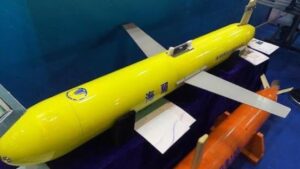In the vast, rust-colored landscape of the Red Planet, where ancient riverbeds whisper tales of potential past life, scientists have long been searching for that elusive spark of biological existence. Recent breakthrough research has finally pinpointed specific regions on Mars that hold the most promising conditions for harboring microbial life, transforming our understanding of planetary exploration and reigniting humanity’s age-old quest to answer the fundamental question: Are we alone in the universe? NASA’s latest mission has unveiled groundbreaking insights into potential Martian habitats that could harbor extraterrestrial life. The Perseverance rover’s extensive exploration has pinpointed specific geological regions where the probability of finding microbial existence is significantly higher than previously imagined.
Ancient river deltas and sedimentary basins within the Jezero Crater have emerged as prime locations for scientific investigation. These areas represent complex environmental systems that once contained liquid water, suggesting optimal conditions for potential biological development billions of years ago.
Researchers have discovered mineral compositions indicating hydrothermal activity and organic chemical signatures that hint at prehistoric microbial ecosystems. The layered sedimentary rocks contain intricate chemical traces that could potentially represent fossilized remnants of ancient microorganisms.
Sophisticated scanning technologies deployed by the rover have enabled unprecedented detailed mapping of these promising regions. Spectral analysis and high-resolution imaging techniques allow scientists to examine microscopic geological structures with remarkable precision, revealing nuanced environmental patterns.
Geochemical investigations reveal that certain clay-rich terrains possess unique chemical signatures consistent with potential biological processes. These zones demonstrate remarkable preservation potential, protecting potential molecular evidence from radiation and extreme environmental conditions.
Compelling evidence suggests that these regions experienced sustained water presence during Mars’ early geological epochs. Complex mineral formations indicate dynamic aqueous environments that could have supported primitive life forms, challenging previous assumptions about planetary habitability.
Advanced instrumentation like the SuperCam and SHERLOC instruments provide unprecedented molecular-level insights, enabling researchers to detect organic compounds and potential biosignatures with extraordinary sensitivity. These technological marvels represent humanity’s most sophisticated planetary exploration capabilities.
Strategic sampling protocols have been meticulously designed to collect and preserve potential biological evidence. Specialized containment mechanisms ensure that any collected specimens remain uncontaminated, maintaining scientific integrity throughout the extraction and analysis processes.
International collaborative efforts between multiple space agencies have converged to develop comprehensive exploration strategies. Interdisciplinary teams of astrobiologists, geologists, and planetary scientists work synergistically to unravel Mars’ complex biological mysteries.
The upcoming sample return missions will provide unprecedented opportunities to conduct detailed laboratory analyses of Martian geological specimens. These missions represent a pivotal moment in humanity’s quest to understand potential extraterrestrial life forms and planetary evolution.
While definitive proof remains elusive, these discoveries represent significant advancements in our understanding of potential Martian biological environments. The scientific community remains cautiously optimistic about uncovering groundbreaking revelations that could fundamentally transform our comprehension of life’s potential beyond Earth.









